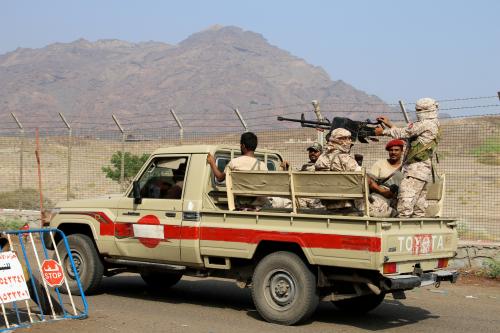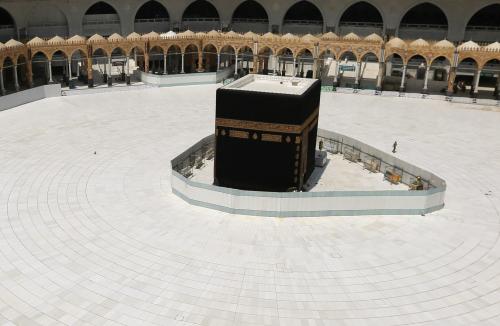The five year-old war in Yemen is intensifying. The country is splitting apart as the pandemic ravages the poorest country in the Middle East. The war is a burden on the Saudi economy, dooming hopes of diversification. Iran is the winner in the quagmire.
The Saudis staged air strikes on Sana’a and other cities in the north under the control of the Zaydi Shiite Houthi rebels last week. At least 40 air attacks hit the capital. Another target was Saada, the home of the Houthis’ leadership. The Saudis say they are trying to kill the top Houthi officials.
The attacks follow the firing of missiles and drones at Riyadh and other Saudi cities and towns. The Saudis claim to have shot down the missiles. The Houthis claim they hit the Saudi Ministry of Defense.
The escalation in the fighting marks the failure of months of efforts to arrange a ceasefire, including the Saudi public call for a unilateral ceasefire. The Saudis are well aware that the war costs them a fortune, at a time when global oil demand is sharply down and Saudi revenue is low. Saudi oil is selling for around $40 a barrel, less than half what the kingdom needs to break even. The details of the multiple efforts at arranging a ceasefire are unknown, but certainly the Houthis don’t feel much compulsion to quit while they are winning on the ground. The war rallies many Yemenis against the hated foreign Saudis.
Due to the pandemic, the Saudis closed the annual hajj pilgrimage to Mecca for most foreigners, another major economic setback. The virus is surging in the kingdom, as well in neighboring Bahrain, Qatar, and Oman. The Saudis have surpassed 200,000 cases, with some in the royal family.
Crown Prince Mohammed bin Salman, the architect of the reckless Saudi war, has announced plans to diversify the economy and build a new city in the northwest of the country. Those plans are stalling due to the weak economy.
In southern Yemen, separatists have taken control of the port city of Aden and the strategic island of Socotra, throwing out the supporters of the Saudi-based government of Abdrabbuh Mansur Hadi. Other parts of the south are in the hands of local militias. Putting Yemen back together increasingly looks impossible.
The war has cost an estimated 100,000 lives. Eighty percent of Yemenis need humanitarian assistance from the outside. Now the coronavirus is wreaking havoc on the malnourished populace. The head of the United Nations International Children’s Fund (UNICEF) in Yemen says “the crisis is of cataclysmic proportions,” and is getting worse as aid funds dry up due to the global economic depression.
The Houthis are in denial about the pandemic, citing absurdly low numbers of infection and deaths. They also tax humanitarian assistance and divert aid to themselves. But they retain exclusive control of virtually all of the north.
Iran has been providing assistance to the Houthis, especially for their missile and drones, since before the war began. The aid is relatively cheap. The Iranians are getting valuable combat experience in the capabilities of their missiles and drones in Yemen. The experience will undoubtedly help Iran’s allies, like Hezbollah, improve their capabilities.
Tehran has bogged down its regional rival Saudi Arabia in an expensive debacle in Yemen, with apparently no way out. The war costs to the Iranians, in contrast, are minimal. The Saudis will be tarred by the humanitarian catastrophe they have helped create for years to come, and the crown prince’s reputation is toxic. Iran has a host of problems — the virus, mysterious explosions, and others — but in Yemen it’s a winner.
The Brookings Institution is committed to quality, independence, and impact.
We are supported by a diverse array of funders. In line with our values and policies, each Brookings publication represents the sole views of its author(s).









Commentary
Yemen’s disaster becomes “cataclysmic”
July 6, 2020